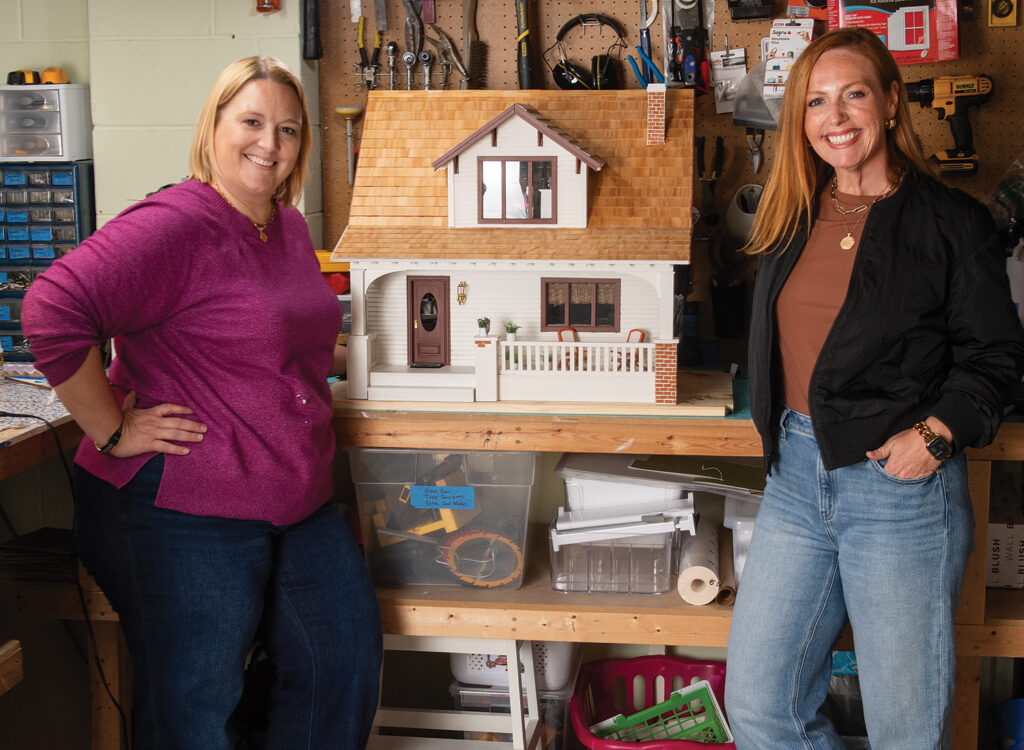Derecho-devastated Iowans wonder when more help will come: ‘This is beyond us’

Editor’s note: The Iowa Center for Public Affairs Journalism-IowaWatch is a nonprofit, online news website that collaborates with news organizations to produce explanatory and investigative reporting. Read more at www.IowaWatch.org.
In 2008, residents of Iowa waited a day for a major disaster declaration when an EF5 tornado struck Parkersburg.
That twister cut through Black Hawk and Butler counties, killed nine people and injured dozens. It destroyed nearly 200 homes, totaling several millions of dollars in damage.
President George W. Bush granted Gov. Chet Culver’s disaster declaration request within 24 hours. Culver used a provision in the federal code available to all governors: If a catastrophic event is so severe, the state can ask for a waiver to begin the flow of federal help immediately.
After the massive derecho hit, thousands of Iowans — already struggling and frustrated due to the COVID-19 pandemic — were left without homes and hot food and more than a week without power.
They wonder where the help is.
“We cannot pull ourselves up by the bootstraps without boots,” Desiree Sade, a Cedar Rapids resident, wrote in an online interview with IowaWatch. She spent several days coordinating help for disabled and elderly residents.
The help is coming, state leaders say. Gov. Kim Reynolds said a comprehensive disaster assessment needed to be done first to get the disaster declaration.
At a news conference four days after the storm, she said her staff expected to submit the request on Aug. 17. The request was submitted Aug. 16.
On Aug. 10, a huge storm ripped up trees, flattened cornfields and left the landscape littered with downed electrical poles, remnants of roofs and semitrailers turned on Iowa’s highways. The term “derecho” was first used by a University of Iowa professor in 1888 to describe the widespread straightline windstorms. Last week’s derecho traveled 700 miles in 14 hours with winds of 112 mph.
With more than 50,000 cases of COVID-19 and — as of Aug. 16 — 975 deaths, the devastation brought by last week’s derecho feels like an insult piled on injury.
TO HELP: United Way of Eastern Iowa is coordinating volunteers and donations. It is coordinating with a group of organizations to meet needs and skills to specific areas. Call 224-406-1366 or go to uweci.org/volunteernow.
‘This is beyond us’
Iowans remember the storms of 2008 — a summer of tornadoes, severe weather and massive flooding. Parkersburg was not the only disaster that year.
Cedar Rapids, the state’s second-largest city, was submerged when the Cedar River crested 20 feet above flood stage. But officials there are saying the devastation caused by last week’s derecho is more widespread than the historic flooding.
The 2008 flooding hit a specific section of the city, said Kristin Roberts, the president and CEO of the United Way of Eastern Iowa. Other areas fully functioned.
“This affected the entire city. That is the challenge to work around. Everyone is in the same boat,” she said.
The derecho left Cedar Rapids at a near standstill — no one goes to work, communication is slowly being restored, everyone focuses on the next need. Roberts couldn’t leave her neighborhood for two days because of the downed trees.
The day after, Reynolds saw the destruction. Cedar Rapids – the town’s logo is a tree – had half its tree canopy ripped away. She was to visit again two days later for a news conference but it was held Friday instead. (Vice President Mike Pence made a campaign stop in Des Moines to launch the Farmers and Ranchers for Trump coalition. Reynolds accompanied Pence to Living History Farms near the capital, where he met with some farmers and looked through copies of pictures of flattened cornfields. Later he was the keynote speaker at a private GOP fundraiser in Urbandale. Pence didn’t visit a single farm.)
Residents have struggled to find gas for generators and food and water. Neighbors and strangers are coming to their aid.
Sade, the resident helping disabled and elderly, has been getting food and other supplies through a Facebook-based fundraising campaign.
“My late father was disabled and had he been alive he would’ve been trapped in a second-floor apartment with no power, no way to get ahold of me and no one to help him,” Sade said.
“I know many of our seniors do not have the luxury of having family that are able to assist them during these times,” Sade, the founder of a nonprofit animal rescue Adopt A Pal, wrote to IowaWatch in an online interview.
Sade’s own home was damaged; the derecho took out a big pine tree and part of a fence. There was also damage to the house and garage.
“We put our house on the back burner for now as far as most cleanup goes because we feel like others have more pressing issues that we can help with,” she said.
‘Like a bomb went off’
A spot did not exist in Iowa’s second-largest city that didn’t sustain damage, city officials said.
“It basically looks like a bomb went off,” Michael Hachey of Cedar Rapids said. He and Andrew Alberts, also of Cedar Rapids, were among the many professional workers cutting trees for residents needing fast help. They were in Cedar Rapids for the 2008 flood.
“It’s not just low-lying, riverside areas that were affected,” Hachey said about this storm, “although 2008 was devastating.”
“We’ve heard a lot of people say that they’ve purchased these homes in this area for the mature trees, and everything, and now they’re gone,” Alberts, a lifelong resident of the city’s northwest side, told IowaWatch.
Tree removal companies ranged from small cutters like Alberts and Hachey to those with cranes, necessary to remove huge trees from house’s roofs. Companies with cranes were charging in the $15,000 to $18,000 range in some instances.
Blake Rowland, living on Grand Avenue Southeast, said this is the worst storm damage he’s ever seen in Cedar Rapids. “Everyone felt something from it,” he said.
Kavin Martin, who lives about a block away from Rowland on Grand Avenue Southeast, used a generator for temporary power that kept his food from spoiling. Surrounded by fallen trees and power lines along the street, Martin said the toppling trees missed his house and car. “I feel blessed,” he said.
United Way of Eastern Iowa is coordinating volunteers and donations. It is coordinating with a group of organizations to meet needs and skills to specific areas. Call 224-406-1366 or go to uweci.org/volunteernow.
Roberts said 14 out-of-state organizations are headed to Iowa to help. One is the United Cajun Navy out of Louisiana, bringing in food and other supplies. The Cajun Navy assists hurricane victims, according to its website.
The need is great and will go on for some time, Roberts said.
“God bless every single person who has helped their neighbor. … This is beyond us,” she said. She urged residents to give grace to leaders who likely have had property damage or injuries and to also watch out for scams when giving a donation.
‘Down to the dime’
Back in Marshall County, Maureen Gummert is frustrated.
“We are sick and tired and there isn’t a way for us to go get help and there is no help in sight.”
She lived through the 2018 tornado that took out a good part of town though fortunately spared lives. She and her wife, Shawn, are currently recovering from COVID-19 and are raising a 5-year-old daughter with a rare genetic disorder. Fortunately, they have a generator.
“We can’t just pick up and move to a hotel with our special needs child, who needs a special bed and is on a special medication schedule.”
Some parts of town have power, others don’t. With the massive number of trees straining on power lines, it isn’t safe for crews to even get in.
State Center Mayor Steven Sodders told IowaWatch that State Center, like neighbors in Cedar Rapids, pulled together to clean up. But as a small-town mayor he worries about money.
“We are still trying to dig out from COVID,” he said. “We took a financial hit from that, and it is still going on. But now with the storm I don’t know where we’re going to have to pull money from.”
Sodders and the workers in State Center are keeping track of the money the city spends on disaster cleanup, “down to the dime.”
Because Marshall County is one of the 27 counties Reynolds declared state disaster areas, the city can recoup the cost of cleanup. But, Sodders said, a federal declaration is needed because in essence it frees money to pay back the state for the cleanup and means Sodders and other mayors facing an already rocky fiscal outlook won’t have to consider raising property taxes on citizens who are already suffering from the one-two punch of COVID and the derecho.
“Federal dollars are taxpayer dollars and they are there for a reason,” he said, “just like when a hurricane hits down South, Iowa’s federal taxpayers help foot the bill for those folks suffering.” ν
Andy Kopsa is a freelance writer and native Iowan who occasionally reports and writes for IowaWatch. A full version of this story is available at www.IowaWatch.org.











